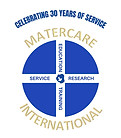Upholding the Dignity of Women in Family and Faith
- Jennifer

- Oct 15
- 2 min read
Before Peter ever proclaimed Christ as Lord, Mary had already said yes.
Before the Church had hierarchy, it had receptivity.
Before the pulpit or the altar, there was a womb open to God, full of grace, bearing the Word into the world.
To say that the Church was Marian before it was Petrine is to remember that the first vocation of the Church is not authority but love, not governance but response, not order but fruitfulness.
In Mary, the Church discovers her deepest identity: she is the Bride, the Mother, the handmaid of the Lord. Every vocation priestly, parental, consecrated, or lay is meant to mirror this Marian “yes” to God’s will. The Petrine office (represented by Peter and his successors) serves the Marian mystery; it guards and nourishes what Mary first conceived, the living Word within the community of believers. The Marian precedes, grounds, and gives purpose to the Petrine.
This means that the Church’s holiness does not flow primarily from its hierarchy, but from its fidelity to the Spirit, a fidelity often embodied most deeply in women who, like Mary, say “Let it be done unto me.”
In the 12th century, St. Hildegard of Bingen, now Doctor of the Church, made this truth blaze anew. A Benedictine abbess, mystic, theologian, and Doctor of the Church, Hildegard saw womanhood as an image of God’s life-giving power, what she called viriditas, the “greening” vitality of the Spirit that renews all creation.
To her, the Church is a living body in which every vocation, whether priest, parent, scholar, or servant, is animated by the same Spirit. The priest at the altar and the mother at the cradle participate in the same mystery: both bear Christ to the world.
Hildegard challenged the idea that holiness or authority could be measured in “levels.” She knew that God’s call cannot be confined to clerical ranks, for “the flame of the Living Light” ignites all who open themselves to divine life.
In the home, the first school of love and the first sanctuary of the Church, women often live the Marian vocation most vividly. Through self-giving, through teaching faith by example, through acts of mercy and steadfast prayer, they become the hidden foundation on which the visible Church stands. Their vocation is complementary, essential, and sacred.
To recognize this is not to diminish the Petrine ministry, but to restore its right relationship: the Marian sustains the Petrine. Authority serves receptivity; structure protects life.
St. Hildegard called humanity a “symphony of the Holy Spirit.” In such a symphony, no voice is higher or lower, each part matters for the harmony to ring true. When they are heard and honored, the Church sings again with beauty and power.
Let us, then, renew our vision of the Church, not as a ladder of ranks, but as a communion of vocations. Let us remember that before Peter’s keys, there was Mary’s fiat; before the pulpit, the heart that treasured the Word in silence.
The Church was Marian before it was Petrine, and She will be Marian at her end, when every soul at last says “Yes” to the eternal Word and is gathered into His love.



Comments